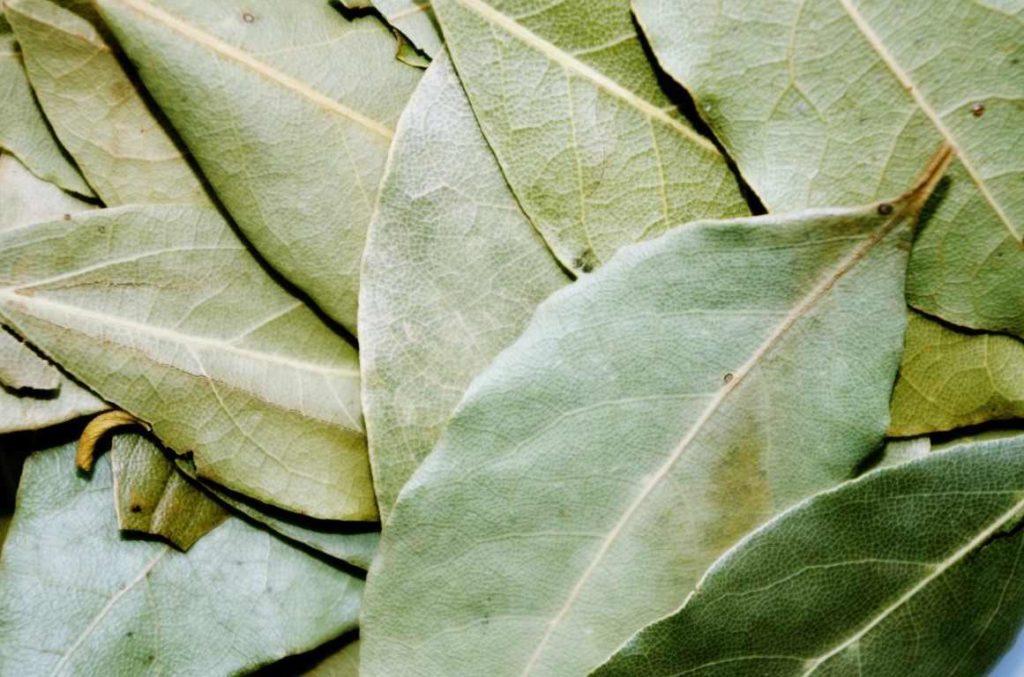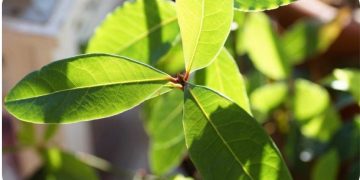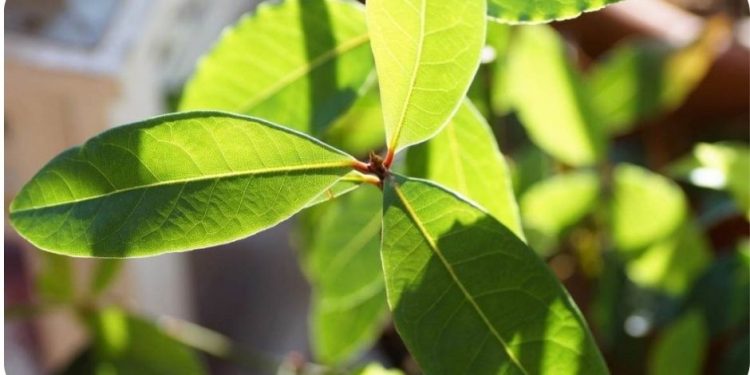Introduction to bay leaf gardening for beginners, planting tips, ideas, techniques, questions, and answers (FAQs): Hello gardeners, we are back with one more article today and the article is all about bay leaf gardening for beginners. Do you want to grow a bay leaf plant and do you want to know all the growing requirements of a bay leaf plant? Well and then you will need to follow this complete article to grow the perfect bay leaf plant. In this article, we are going to discuss some frequently asked questions about bay leaf gardening.
The bay leaf is a special fragrant leaf that is frequently used in cooking. It can be consumed whole, dried, or ground.
A guide to starting bay leaf gardening for beginners, planting tips, ideas, techniques, questions, and answers
Purchase a seedling or take cuttings from a bay tree. A bay tree can be found in the herbal section at many nurseries and garden centers. If you’d rather propagate it from a cutting, follow these steps:
In the early summer or autumn/fall, take a heel cutting, a fresh shoot, or a tip. A mature bay tree was used for this project. The length of the cutting should be around 8cm or 3inches.
Remove the cutting’s upper and lower leaves.
Dip the root end you want to cut into the hormonal cutting mix. This will promote rapid root growth.
Fill a container two-thirds with coarse sand and one-third with peat moss with the cutting.
To keep the container from touching or landing on the cutting, place it under a plastic bag suspended from wire or something similar. For the cutting, this generates a mini-greenhouse.
Patience is required. The cutting will take around 9 months to root.
Choose whether to grow the bay tree in a container or the garden. It will thrive in either location, but the container bay tree will need to be re-potted and given new soil regularly to guarantee optimal growth. The best time to plant a young bay tree is in the spring.
In cool to warm climates, bay trees prefer full sun. Provide partial shade for very hot or tropical weather in a hot zone.
Choose soil with a medium richness and good drainage. If you’re planting the bay tree in a container, a little lime will help to balance out the acidity.
Keep the soil moist but allow it to dry completely between watering. During warmer temperatures, drink more frequently.
In a container, bay trees require more frequent watering.
The bay tree should be mulched. Both in-ground and container-grown bay trees should be treated in this manner. The topsoil is sufficient. However, any mulch should be kept away from the tree’s trunk.
Fertilize once a year in the spring. Give the bay tree a balanced diet.
Pruning bay trees are only necessary if you want them to form a specific shape or if you don’t want them to grow to a certain height. Bay trees can reach a height of 10 to 20 meters or 33 to 66 feet, but they will grow much shorter in containers.
The leaves are edible and can be harvested at any time once the tree has established itself. To maintain their aromatic flavour, harvest them early in the day.
Now, let us discuss some frequently asked questions about bay leaf gardening;
In case if you miss this: Vegetable Container Gardening For Beginners.

What is the best way to plant a bay leaf plant?
Sweet bay trees should be planted in well-drained soil that has been amended with plenty of compost. When grown in a container, the trees can be regulated to a reduced growth habit, allowing the gardener to transfer the tree indoors or to a sheltered position when winter conditions threaten.
What are the greatest places to plant bay leaf trees?
In full sun to light shade, the plant thrives. It will benefit from some afternoon shade if grown outside in hot areas. If you grow the plant inside, it will require intense light and occasional sprinkling to maintain the desired humidity level.
Do bay leaves require direct sunlight?
Young bay plants should be planted in the spring after all dangers of frost have passed, allowing the plants to establish themselves before the summer. Choose a shady place in full sun that is protected from severe gusts.
Is it possible for a bay leaf plant to survive the winter?
Bay is a half-hardy shrub or small tree that can withstand temperatures as low as 7°C in the winter. Bay is best grown in a container that may be maintained indoors over the winter in chilly locations.
What is the best way to care for a bay leaf tree?
- Bay trees prefer a sunny or somewhat shady spot in the garden.
- During the growing season, you need to water regularly with well-drained soil.
- Hardiness: Mostly hardy, having the ability to withstand temperatures as low as -5°C.
- Pruning: For shape, prune in the spring and summer.
When is the best time to pick bay leaves?
Bay leaves can be gathered at any time during the growing season, but the best time to harvest a bunch at once is around midsummer when the leaves are at their most flavorful in terms of essential oils. Harvest huge, undamaged bay leaves by handpicking or snipping them off.
Are bay trees suitable as houseplants?
A bay tree can be grown indoors year-round, even though it prefers to be outside in the spring and summer. A bay tree makes a lovely houseplant with its glossy green leaves and modest growth rate.
How can bay leaves be harvested without harming the plant?
To avoid leaving a length of bare leaf stem attached to the parent plant, cut the leaf close to the branch. This promotes new growth and lowers the chance of sickness. Cut branches back to a lower leaf or bud while pruning your bay tree.
What can I do to make my bay tree bushier?
How about this: How To Start Onion Farming.

In the summer, prune bay trees into regular lollipops, spirals, or cones. To retain the plant’s foliage in the desired form and stimulate bushy, thick growth, cut new growth back to a bud. You can also cut out any sprouts or leaves that have been damaged by the cold in the early spring.
Is Epsom salt beneficial to bay trees?
Once a month, sprinkle a tablespoon of Epsom Salt about your trees and shrubs to help them grow stronger, have more foliage, and be more tolerant to environmental influences.
Is it okay if I put my bay tree in the ground?
The bay tree is a common evergreen shrub that can be grown in containers or the ground. The dark-green leaves, when kept carefully groomed, may produce striking formal designs that enhance an entrance or look great on a patio.
Is it true that bay trees require a lot of water?
When planted in the ground, bay trees don’t require much water, but they dry up more rapidly in containers. Water the soil regularly throughout the year to keep it moist.
What causes the curling of bay leaves?
Bay Suckers are most likely to blame. These are sap-sucking insects that only come out in the summer. Yellowing thickened, and curled leaf edges are the symptoms.
What is the best way to prune a bay leaf tree?
In the spring, prune out any dead or damaged leaves or branches for all sizes. Hard pruning can be done on mature, fully grown trees, but re-growth is sluggish; do it over two or three years to keep some greenery while the new growth emerges. Trim above the leaf nodes to shape.
What is the best way to fertilize a bay leaf tree?
For a bay laurel growing in the ground, use a 24-8-16 fertilizer diluted at a rate of 1 tablespoon per 1 gallon of water, 1/2 teaspoon per 1 gallon of water for a bay laurel in a container, or the levels indicated in the fertilizer manufacturer’s instructions.
Is it possible to develop bay leaves from a cutting?
Remove all except the top couple of leaves from the end of a stem by cutting a 6-inch or 15-cm piece off it. Keep the cutting wet and away from direct sunlight by placing it in a pot of suitable growing media.
Are bay trees known for their deep roots?
Because bay trees have shallow roots, use a wide root ball rather than a deep root ball when transplanting. That way, you’ll cause the least amount of harm to the important areas of the roots. Water thoroughly, not only to keep the soil moist but also to allow it to settle and come into contact with the root ball.
Is it possible to prune a bay tree hard?
Large bay trees may tolerate even severe pruning, such as cutting back the main trunk, and it’s difficult to permanently harm one. They are, however, notorious for needing two or three years to get back in shape. They, like many other trees, benefit from pruning in the late spring when the weather is dry.
What is the best way to care for a sick bay tree?
If the plant is infected, use a fungicide to treat it. A foliar spray is effective. Dig the dirt away from the plant’s roots and replace it with uninfected soil in extreme cases. The soil in container plants should also be replenished.
What’s the reason for my bay leaves turning yellow?
A nutritional deficit might be indicated by yellowing bay leaves. When your soil is overly alkaline or there is root injury, iron chlorosis might develop. Your bay leaves may turn yellow at the edges first, while the veins remain green if you have this condition. Sulfur or peat moss can be used to adjust the pH.
What should I feed my bay tree?
During the growing season, bay trees become hungry and may require slow-release fertilizer. In the spring or summer, begin applying slow-release fertilizer granules or a layer of organic matter (mulch) to the topsoil. This will allow the nutrients to gently infiltrate the soil and be utilized by the tree.
What kind of pest consumes bay leaves?
Aphids and psyllids are the most common foliar pests on bay trees. Aphids are soft-bodied insects that come in a variety of colours, including brown, black, white, green, and even red. They cling to stems or leaves in colonies, frequently in a clump. These insects feed on sap and can eventually cause leaf stippling and a reduction in plant vitality.
Is it necessary to cover bay trees in the winter?
Open the cover preferably during the day when the temperature is above freezing, but at the very least as soon as the sub-zero temperatures have passed. When cold weather is expected, the best way to safeguard your bay tree is to bring it indoors.
What is the reason for my bay leaf plant’s death?
Your plant is probably just experiencing natural indications of age as long as new leaves replace the old ones. Overwatering – Many Mediterranean plants have adapted to soils that don’t hold water well. As a result, you’ll need to change your watering schedule.
Why have my bay tree’s leaves turned brown?
Brown leaves on the inside of bay trees are common, especially during long, dry summers. It’s caused by the plant drying out too much in January and February. Bay trees thrive in nutrient-rich, well-watered soil.
How do bay leaves repel insects?
Place whole bay leaves in areas where you frequently see pests utilize bay leaves as insect repellent. Bay leaves should be placed on the counters, behind cabinets and appliances, around trash cans, and along baseboards.
What is the best way to get rid of pests that are eating my leaves?
Misting the leaves to keep them moist is one of the most effective strategies to combat this insect. To keep these mites from laying eggs on your leaves, dust and clean them frequently. For severe infestations, make a homemade pest spray for indoor plants with water and neem oil.
What can you plant with a bay leaf?
Bay is one of the herbs that we believe should be included in every garden. Not only because it’s delicious, but also because the plants’ magnificent evergreen leaves create a lovely addition to the garden all year.
Plants to Grow with Bay leaf
- Beans
- Rosemary
- Lavender
- Oregano
- Olive
- Citrus
Is it possible to grow bay trees in pots?
The bay tree is often known as bay laurel or the bay tree is an evergreen shrub with aromatic bay leaves. Bay thrives in containers, and standard plants look especially nice on either side of a front door, providing a formal, year-round display.
What exactly is the problem with my bay leaf tree?
Problems – Waterlogged roots or rainy weather conditions are common causes of leaf stains. This is also quite common in container plants, indicating that the compost has become old and exhausted. In the spring, repot your plant into new, well-drained compost.
What is the best way to treat bay tree disease?
Remove any dead or broken leaves to reveal a healthy bud towards the direction in which you want the stem to grow. Cut to shape in the same manner. For an untrained bush-shaped bay tree, we believe a maximum height of 135cm / 4ft 6in is about the greatest height most people can properly manage.
What is the most common disease that affects bay trees?
The most frequent pathogen in bay plants is Phytophthora. It’s classified as both root and crown rot. The disease is caused by a fungus that grows in soil and thrives in damp environments.


































